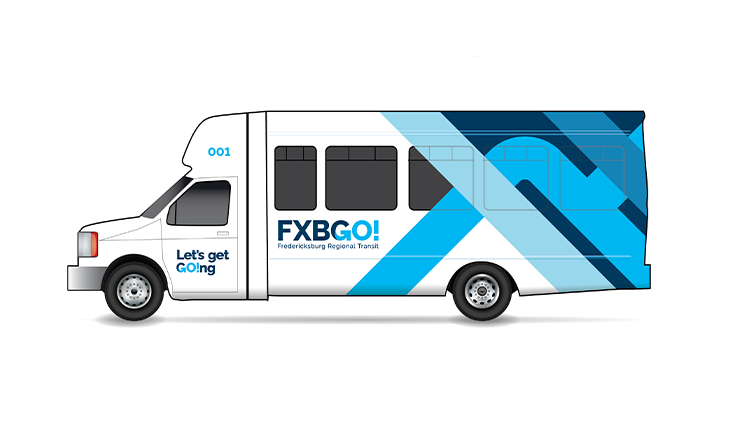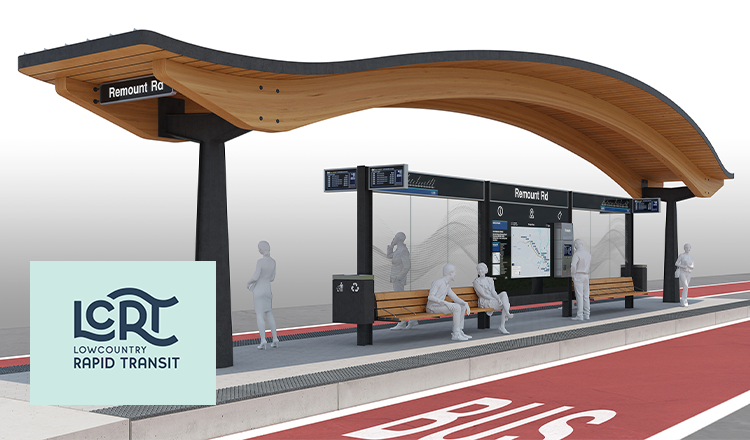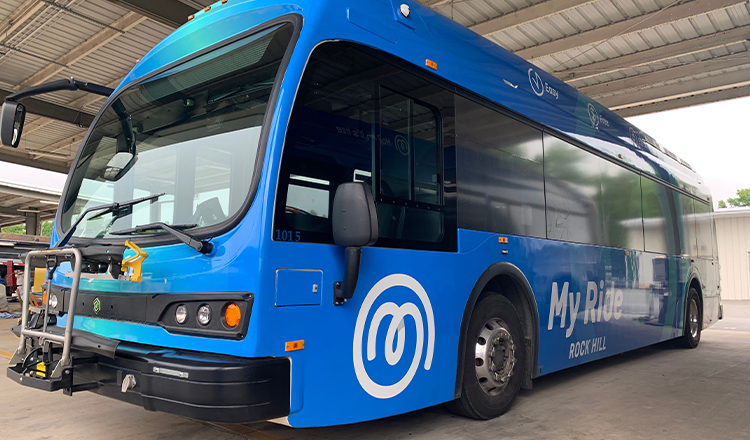
Experts Talk: Building Transit Agency Brands for the Future with Samantha Dubay
Experts Talk is an interview series with technical leaders from across our transportation program.
How Branding Can Position a Transit Agency for Success and Inform Customer Experience Expectations
A brand is, at its heart, the perception an individual has about a service, based on a culmination of every encounter they’ve had, positive or negative. How people feel when they hear an agency’s name or interact with its service — that is the agency’s brand. As transit agencies work to emphasize their place in today’s transportation landscape, now is a good time to ensure a strong brand that promises a premier customer experience to entice riders and support improved operations. Agencies can set themselves up for success by participating in a rigorous branding process, uncovering how the community sees the agency or line and opportunities to improve that perception.
Samantha Dubay leads HDR’s transit brand development work. As a strategic communications manager based in South Carolina, Dubay oversees the development and implementation of inclusive and equitable decision-making processes for infrastructure projects. She currently leads HDR’s work on the branding of the Lowcountry Rapid Transit project, South Carolina’s first bus rapid transit line. Dubay excels at helping transit agencies make critical brand decisions that set the foundation for a successful future.
Q. How does a transit agency get started creating a compelling brand?
A. Transit brand development can bring teams together for informed decision making about the agency’s future. Brand development starts with asking hard, large-impact questions of the agency’s team that require honest reflection. I find that digging into what makes the agency unique or the challenges plaguing operations can be pivotal in defining a new brand. We also use this time to understand how the services they manage will talk to one another, as well as the impacts on the various brands under their transit umbrella.
This is also a crucial time to hold workshops with staff, operators and customers to dig deeper into how services are operating, discuss safety and reliability, on- and off-board pinch points, and Americans with Disabilities Act compliance. To me, it’s imperative to hear from these groups about these rider touchpoints and whether they’re modern and fresh, comfortable and intuitive to navigate. From the shelters and stops to the maps and wayfinding — are the relationships between all service offerings understood and are they clearly communicated? Now is the time to uncover issues and opportunities. For example, when we engaged operators in the Fredericksburg Regional Transit rebrand to redesign uniforms, we helped the agency increase overall buy-in to the rebranding process, creating instant brand ambassadors and proud agency employee stewards.

We gather this information to better articulate the agency’s role in the community through its mission, vision, purpose and values, ensuring that the new brand will resonate with the people that the agency serves.
Q. How does the branding process work? What is the difference between creating a new brand versus rebranding an existing agency?
A. This is the most exciting part of a rebrand: Our creative teams and transit experts come together to hold collaborative workshops with distinct audiences, generally consisting of agency leadership (executive level staff, board members, the marketing team and transit planners), the system operators and customers. This process is about gathering feedback about the existing landscape, including perception of the existing brand. It’s important to have these groups at the table so we can truly get a holistic view of where we are and the direction we recommend for the future.
For an existing service line or transit agency, the workshops can reveal opportunities to refocus the brand to change public perception and to reflect the foundation of the organization. In a recent workshop to rebrand a transit agency, the process revealed some opportunities to better adhere to their mission, particularly as it pertains to both riders and operators was signage. The signs on bus stops and stations were blending in and were difficult to find, leading to wayfinding and reliability issues. The new brand will feature bolder, more identifiable signs, with colours that pop against the natural landscape.
For new transit service lines, we use this as an opportunity to define how the service will fit into the operations of the existing agency and the line-wide identify that it will take on. For Lowcountry Rapid Transit, South Carolina’s first mass transit system currently in development, we held visioning systems with the public to determine what’s important to them in the region, and our team delivered those values in defining the customer experience. The community identified nature, culture and lifestyle as important values to be celebrated, and these values are reflected in every aspect of the final brand. HDR project designers were able to incorporate an ocean motif into the station architecture, from the curvature of the station canopies to the subtle flow of the waves on the bus designs. From the beginning of this process, our transit station design team was engaged and working alongside our branding team so that the brand and the station design work in tandem to reflect the community values of the people who live and work here.

Our transit brand development approach differs from traditional creative agencies because we bring together all services together under one roof for a seamless process — communications and branding strategists, wayfinding, transit planners and asset management experts. I believe that the brands we deliver are stronger for it.
Q. How do you ensure that the different brands under a transit agency umbrella work together to provide a seamless passenger experience?
A. A transit agency often has many potential brands within its main brand. For example, the traditional bus system, a regional rapid transit, paratransit and a small circulator could all have their own brands while still falling under the umbrella of the transit agency or a regional transportation provider. Many times, services will need to stand apart from the agency brand — complementing one another but able to stand alone as well.
It’s important to clearly articulate the relationships between all a transit agency’s services offerings and that those offerings are clearly understood by its users. We uncover all facets of the agency’s mission and purpose and delivering those services artfully in the brand development process. This often means visually showing how all services work together through a wayfinding strategy, crafting messaging that clearly communicates what the agency does and their commitment to the public, how all trip planning and fare tools will work together to ease the customer journey, and helping to define bus, station and stop guidelines so the brand is consistent and recognizable.
Q. What agencies or service lines would be a good candidate for a rebrand?
A. An agency or transit service line is ready for a brand refresh if looking to reposition itself in the community. This could look like a new high-capacity transit line coming online, addressing reliability, introducing new leadership or simply when the agency’s current brand seems tired or dated.
If any of those factors apply to a transit agency, executives should be looking to start a brand refresh.
A brand is inextricably tied to an agency’s long-range planning and vision for its region. Decisions made in the branding process can impact agencies for decades to come and a brand can help define where the agency wants to be in 10 years. The brand development process can also help define messaging around an agency’s long-term goals, its values and its role in the community. With a once-in-a-lifetime infusion of funding from the Infrastructure Investment and Jobs Act, agencies have an opportunity to reimagine and bring forth a new version of the agency. Agency leaders are thinking now about where they want to be in 10 years and grants and federal funding sources can lend a hand in defining that trajectory.
Q. What is the end result of the branding process?
A. Developing the visual and verbal personality along with the brand identity gives us the tools to be consistent across every touchpoint. But it is all of the experience through the employee and customer journey that come together to help define how people feel about an organization and its services.
Depending on the size and scope of the transit agency or system, at the end of the brand development process, we will have clearly defined all elements needed for seamless implementation and launch, including signage, vehicle designs, advertising and sponsorship guidelines, social media strategy, website and digital navigation tools, and every other place a rider sees, hears or feels on their journey.
When Rock Hill, South Carolina, debuted a free-to-ride, all electric bus system, our team helped them turn their vision of a simple, modern and playful system into a reality. This began with a brand purpose and carried through with colors, fonts and finally tangibles such as bus design and signage.

Today’s transit brand must work across the entire customer journey and unify all its ambassadors — customers, operators, leadership. Through this process, we guide the agency in doing just that.
But in my view, equally or more important are the intangible takeaways. The agency will have a finger a redefined pulse of its internal operations and its customers, and a new mission that is aligned with the experience it is delivering.
Inspiration & Advice
Q. How did you get into transit branding?
A. One of my very first project management roles at HDR was leading the development of a commuter services program, which included branding and marketing the program to entice commuters to utilize modes of travel aside from their single occupancy vehicles. From there, I led communications for several transit planning projects, including Lowcountry Rapid Transit, of which the operational brand began with public visioning sessions in 2018 and was unveiled to the public this summer.
Q. What advice do you have for someone just starting out in strategic communications?
A. Ask questions, collaborate, experiment, pilot and apply lessons learned. Great ideas and strategies are born when pulling from perspectives and experiences of others.
Each Experts Talk interview illuminates a different aspect of transportation infrastructure planning, design and delivery. Check back regularly to discover new insights from the specialized experts and thought leaders behind our award-winning, full service consulting practice.




